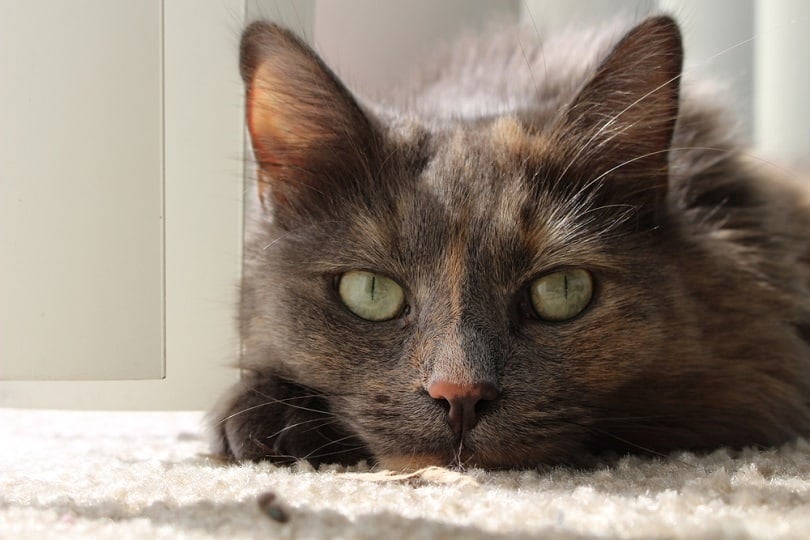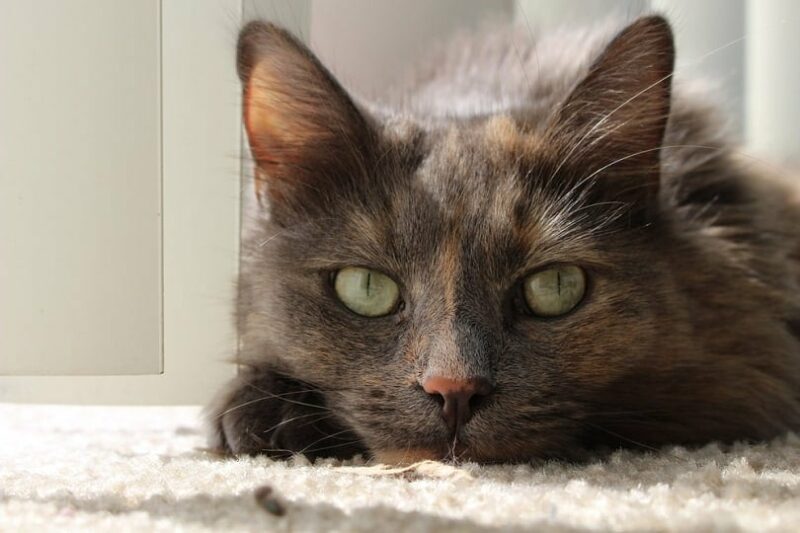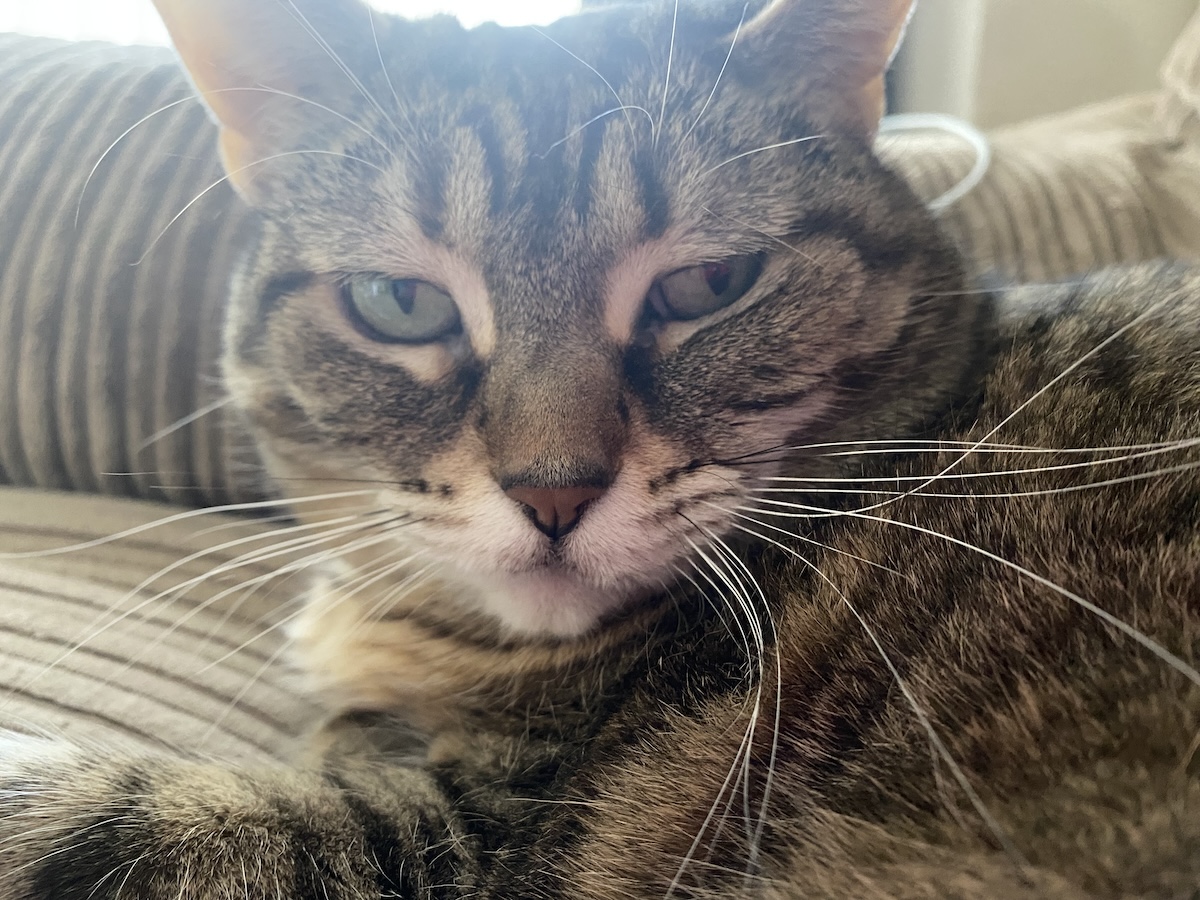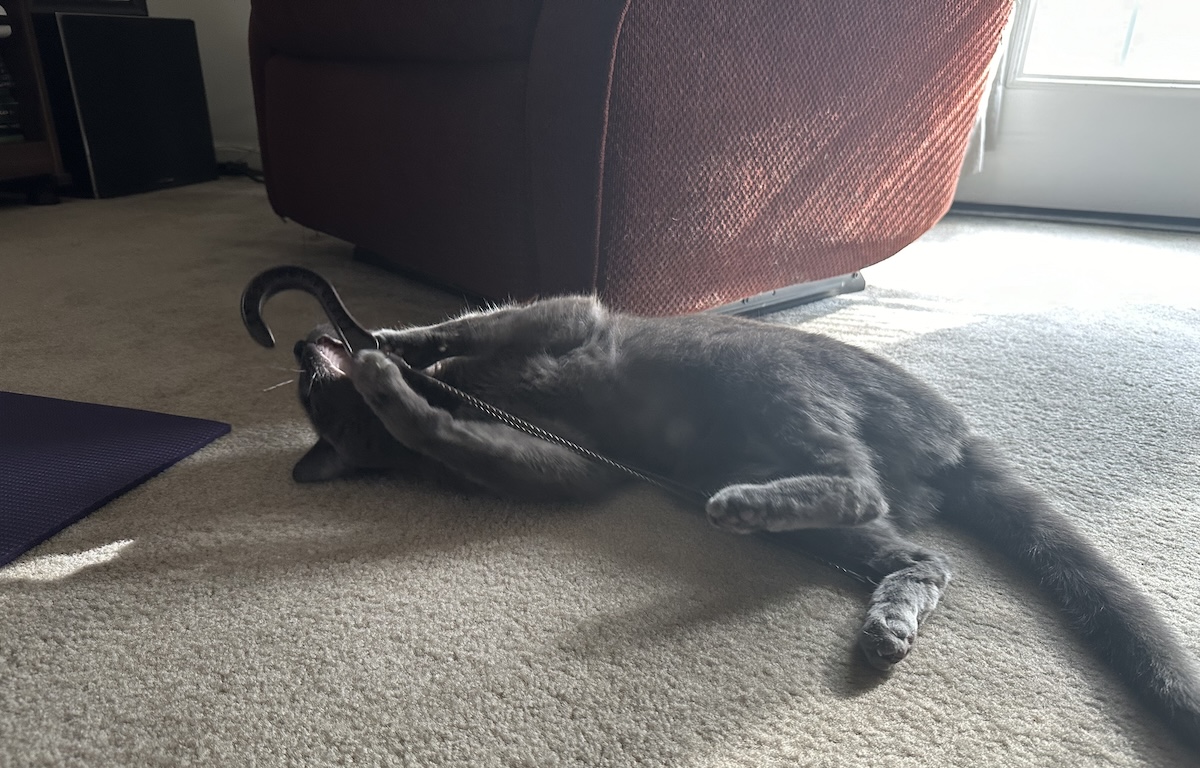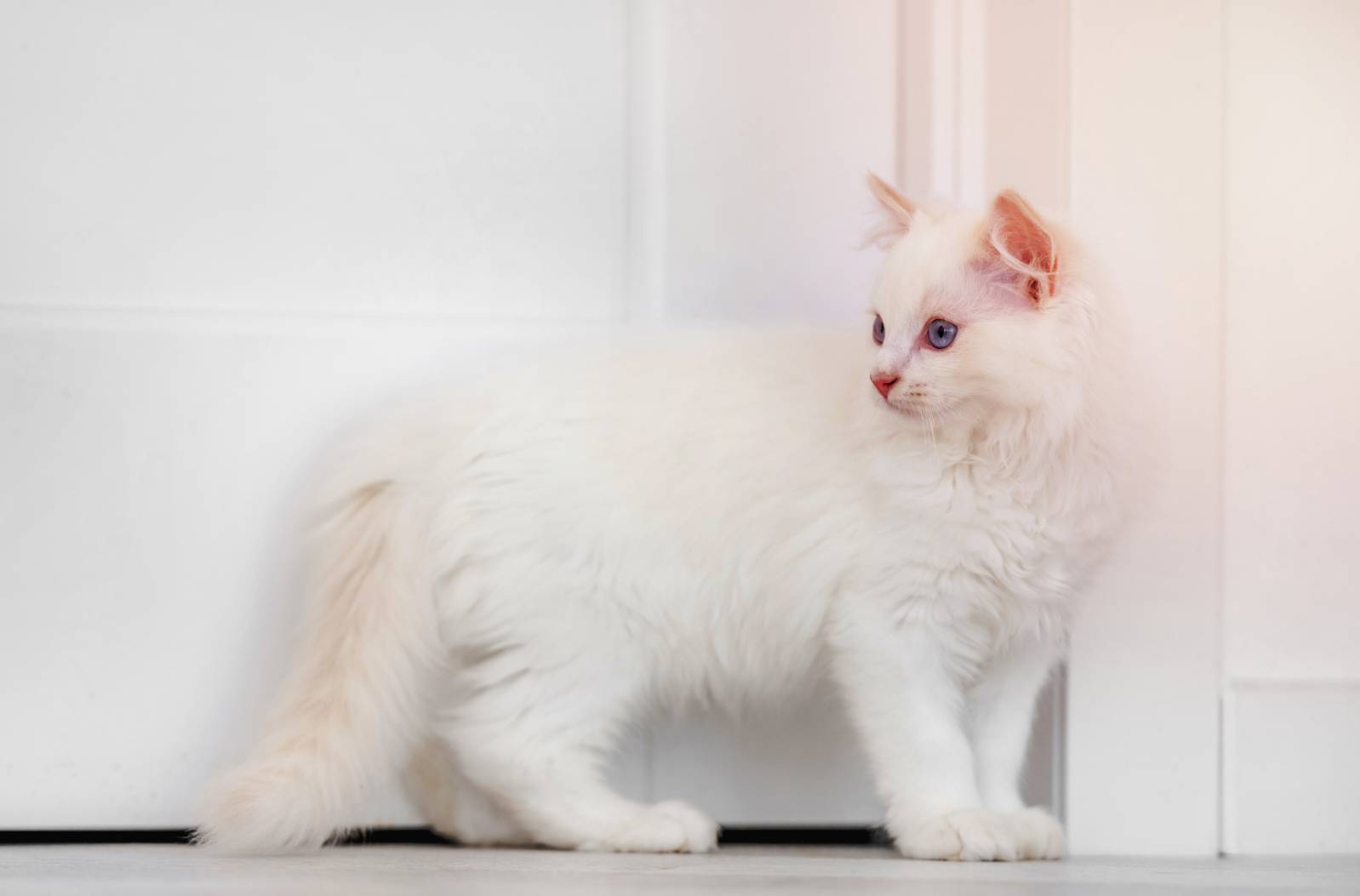Click to Skip Ahead
Are you a fan of longhaired cats? Maybe you love unusual cats that are a bit rare. If this describes you to a tee, a long-haired Tortoiseshell cat might be the ideal pet for you.
Tortoiseshell cats have a mishmash of different colors, which has earned them the Tortoiseshell name. They have been described as being aloof and standoffish and have what is known as “Tortitude” in certain circles. They are compassionate, clever, cheerful, and curious.
No two Tortoiseshell cats are the same, but there are six breeds to choose from. We’ll discuss six Tortoiseshells in our guide below to help you decide which is the best Tortie for you and your family.
The 6 Breeds of Long-Haired Tortoiseshell Cats
1. Domestic Longhair Tortie

| Lifespan: | 10 to 20 years |
| Weight: | 6 to 16 pounds |
The Domestic Longhaired Tortie weighs between 6 and 16 pounds and lives 10–20 years. This is the most common type of Tortie and is a standard mixed-breed cat. These aren’t available very often, but with a standard mixed breed cat, you’re probably getting a healthy kitten because they aren’t purebred cats, which often have health issues.
While this breed is no different from other cats regarding height, weight, and lifespan, they have quite a bit of Tortitude. They are said to be sassier than most, but usually, smaller females are more likely to lash out to protect themselves. However, they still make good pets for someone who can handle the sass.
2. Longhair Manx Tortoiseshell
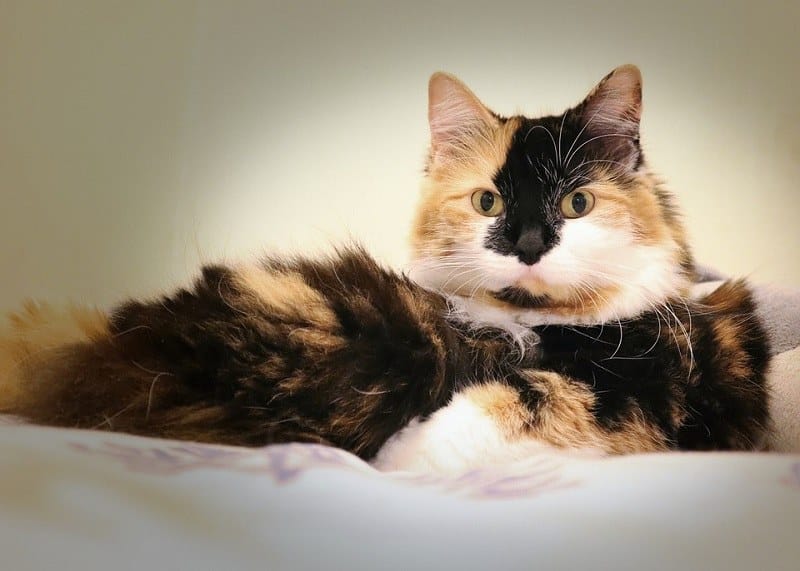
| Lifespan: | 9 to 13 years |
| Weight: | 8 to 12 pounds |
The Longhaired Manx Tortoiseshell weighs 8 to 12 pounds and has an average lifespan of 9 to 13 years. They originated from the Isle of Man and are most identifiable by their short or nonexistent tails. Manx are considered loyal pets and ideal if you’re looking for a cat to hunt rats and other pests.
They make great family pets and have gorgeous coats. While they aren’t considered the best lap cats, they will hang around close to you and your family, though they might not want to be touched all the time.
3. British Longhair Tortoiseshell
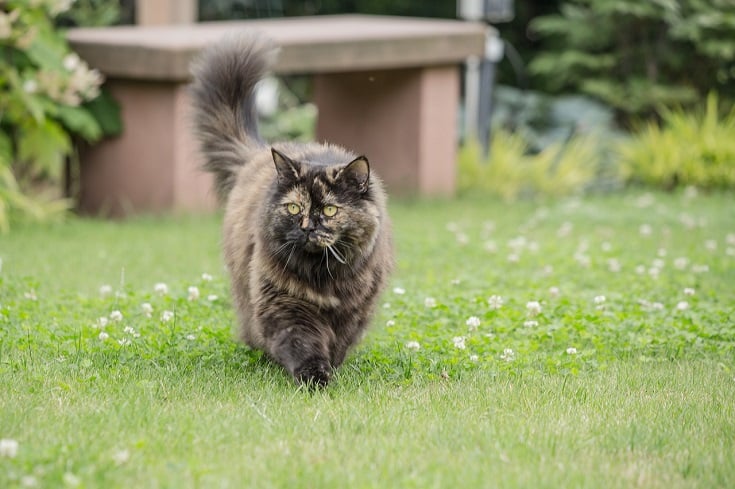
| Lifespan: | 10 to 20 years |
| Weight: | 6 to 18 pounds |
The British Longhair Tortoiseshell cat has a 10- to 20-year lifespan and weighs 6 to 18 pounds. Sadly, they aren’t recognized by all associations. The British Longhair is a medium-sized cat that’s very similar in appearance to the British Shorthair.
They can be standoffish and aloof, but they will also be fiercely loyal to their families. You can get this breed in blue and other colors, so it won’t be hard to find the right one. While they are aloof and standoffish, they can be quite friendly with those they love.
4. Persian Tortie
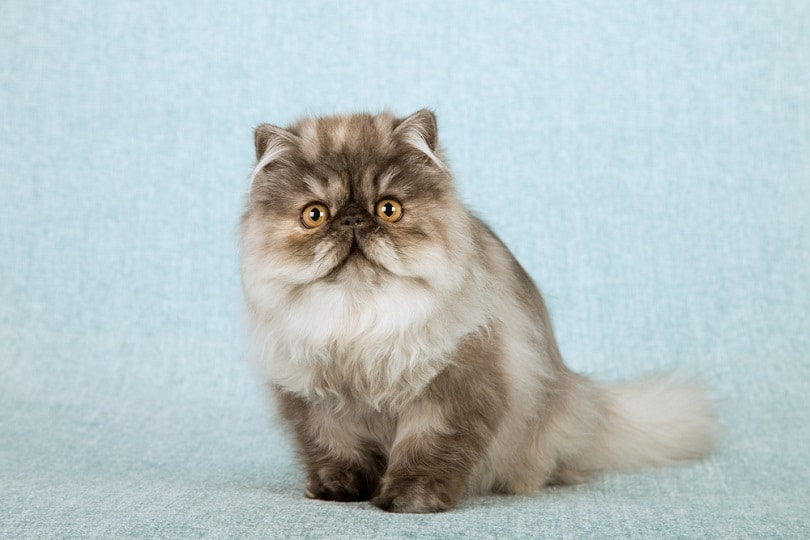
| Lifespan: | 12 to 15 years |
| Weight: | 8 to 14 pounds |
The Persian Tortie reaches 8 to 14 pounds at full growth and has a life expectancy between 12 and 15 years. They have been around for thousands of years, and the flat-faced Persian cat is one of the most popular breeds. They’re very laid back and fond of sleeping all day if you let them.
They are loyal and friendly and prefer to be on the ground rather than climbing a tree, making them different from most breeds. They are excellent pets but aren’t very active, so if you’re looking for a Tortoiseshell cat that will play with you, the Persian might not be it.
5. American Bobtail Tortie
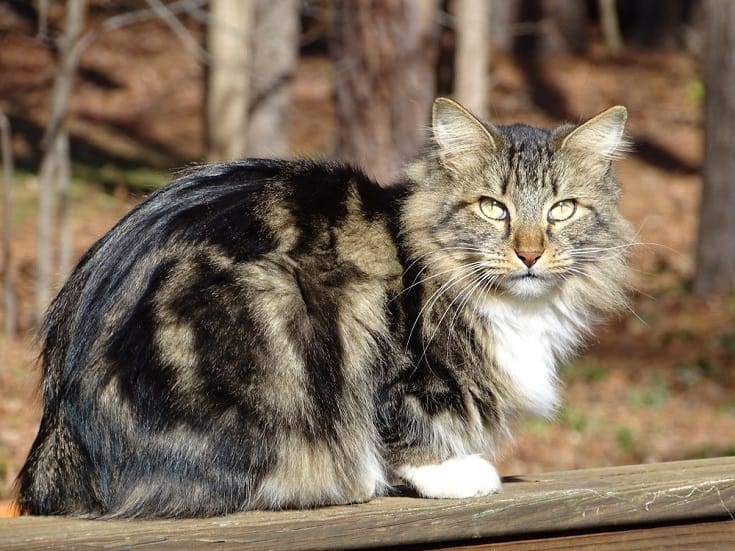
| Lifespan: | 13 to 15 years |
| Weight: | 6 to 16 pounds |
The American Bobtail Tortie lives 13 to 15 years and weighs 6 to 16 pounds when they are full-grown. They’re the result of a natural mutation found in the Domestic Shorthair cat.
This intelligent, playful cat is moderately active, and they don’t need much exercise to be healthy and happy. It isn’t easy to find the American Bobtail Tortoiseshells outside of America since they’re a regional species.
6. Maine Coon Tortie
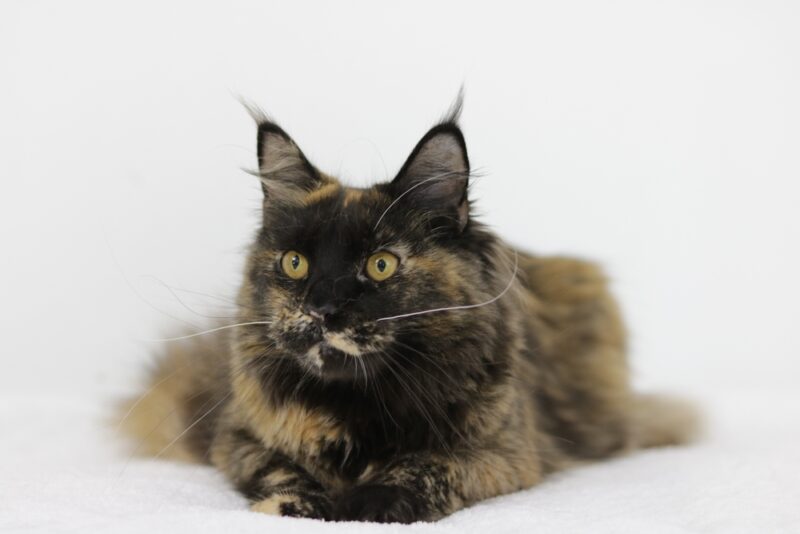
| Lifespan: | 9 to 15 years |
| Weight: | 8 to 18 pounds |
Last but not least on our list of longhaired Tortoiseshell cats is the Maine Coon Tortie. They weigh 8 to 18 pounds and have a life expectancy of 9 to 15 years. Maine Coon Torties are not strictly longhaired or shorthaired cats.
Instead, they are shaggy felines requiring frequent grooming regardless of their coat types. They also don’t mature fully until they are 3 to 5 years old. They can also reach up to 3 feet long, making them larger than other cats.
They are great family pets and do great with children and other animals.
Frequently Asked Questions
Now that you know the different breeds of Long-Haired Tortoiseshell cats you can choose from, we’ll try to answer a few of your questions in the guide below.
How Much Do Longhaired Tortoiseshell Cats Cost?
The price for a Longhaired Tortoiseshell cat will depend on the breed and what the breeder includes in the adoption fees. You can expect to pay as low as $60 to $125 for a rescue Tortie; on the upside, you may spend up to $2,500.
Are Longhaired Torties Rare?
Longhaired cats are rarer than shorthaired cats since the longhair gene is recessive. Only one in every 10 cats will have the recessive gene that results in long hair. If you get a longhaired cat, consider yourself lucky, especially if it’s a Tortie.
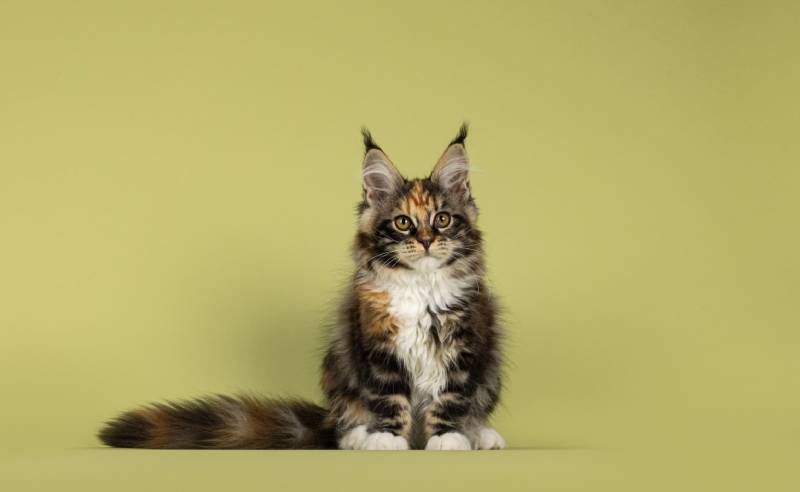
Conclusion
There are six breeds of Longhaired Tortoiseshell cats on our list, and you can find them from breeders at different price points. It’s important to note that Longhaired Torties are rare, so ensure that the breeder is reputable and experienced before purchasing a cat from them. If you give one of these adorable cats a forever home, you can be sure you’ll get plenty of love and loyalty in return.
Featured Credit: Jenna930, Shutterstock

